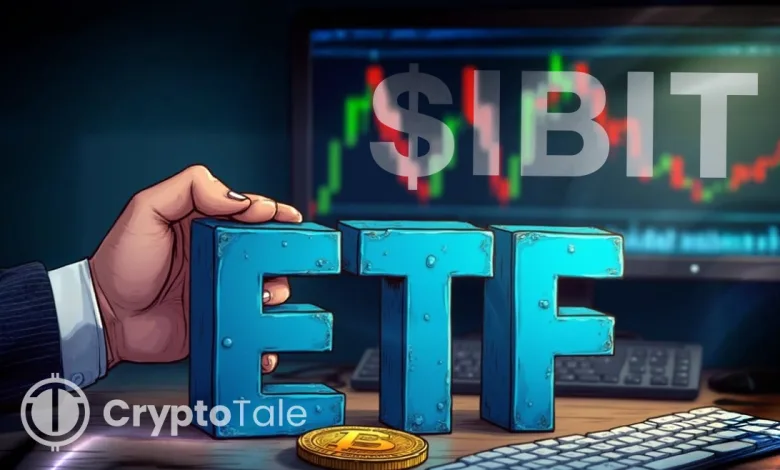Blackrock’s IBIT Faces Record Outflows as Market Pressure Builds

- IBIT sees strong outflows driven by shifting institutional actions and fragile market tone.
- Bitcoin ETFs record steady withdrawals as traders react to unsettled macro signals.
- Liquidity thins as global investors reduce exposure during uncertain risk cycles.
BlackRock’s iShares Bitcoin Trust (IBIT) recorded its largest daily outflow since launch after $523.15 million exited the fund on Tuesday, adding pressure to an already fragile market. The withdrawal pushed IBIT’s current streak to five straight days of redemptions, bringing the total to $1.43 billion. The move extended a broader trend of institutional selling across U.S. spot Bitcoin ETFs as investors reposition for continued volatility and shifting macro expectations.
Institutional Flows Shift as Outflows Accelerate
IBIT, the world’s largest spot Bitcoin ETF with $72.76 billion in net assets, has faced a sustained decline in flows since late October. The latest withdrawal surpassed the previous single-day record of $463 million set on Nov. 14.
Meanwhile, managers have shifted assets to exchanges as large clients cut risk exposure during the market pullback. Combined outflows for all U.S. spot Bitcoin ETFs reached $372.7 million on Tuesday after IBIT’s losses outweighed inflows into Grayscale and Franklin Templeton products.
Spot Ethereum ETFs also joined the slide. BlackRock’s ETHA registered $165 million in outflows, overwhelming $91 million in inflows collected by Grayscale, Bitwise, VanEck, and Franklin Templeton.
Kronos Research CIO Vincent Liu said institutions are adjusting, not abandoning, their positions. “Record-high IBIT outflows signal institutional recalibration, not capitulation,” Liu noted. He added that large allocators are reducing exposure while tracking macro signals for better entry points.
Macro Pressures Drive Liquidity Declines
Market liquidity has thinned due to the prolonged U.S. government shutdown and uncertainty surrounding the Federal Reserve’s December interest-rate decision. Analysts expect liquidity to return slowly once federal operations resume, although the December rate cut remains the key market focus.
Data from the CME Group’s FedWatch Tool shows a 48.9% probability of a 25-basis-point cut next month. This uncertainty has added strain to an already cautious market environment.
Research strategist Dilin Wu stated that ETF redemptions and long-term holder sales have tightened liquidity, adding pressure to short-term prices and reducing confidence. Option traders have shifted accordingly. Sean Dawson, head of research at Derive.xyz, said more participants now seek protection against a decline to $80,000 by late December.
He also noted that the job market’s resilience remains uncertain, and the probability of a December rate cut “slips to barely above a coin toss,” adding little incentive for investors to increase risk exposure.
Related: BlackRock Targets Stablecoin Issuers With New Treasury Fund
Global Outflows Build as Market Conditions Weaken
Digital asset investment products saw their heaviest weekly outflows since February after over $3 billion exited the market over the last three weeks of withdrawals combined. Falling prices across major cryptocurrencies have pushed total assets under management in digital-asset ETPs down 27% from their early-October peak of $264 billion to $191 billion.
The U.S. accounted for most of the movement. Local products saw $1.97 billion in redemptions. Switzerland followed with $39.9 million, while Hong Kong recorded $12.3 million. These developments raise a pivotal question: Will institutional appetite rebound once macro conditions stabilize, or will caution persist into the new year?





